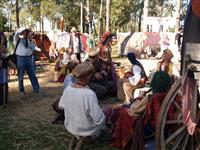
What goes on in the mind when people get together?
Man is a social animal, and as such, it is very important to understand the psychology of how we interact with each other, or act as a group rather than as an individual.
Social psychology is concerned with studying the way people interact within groups. Given that most people work with other people, social interaction is natural at work. Some of this is informal, such as conversations with colleagues. Other contacts are more formal, such as the interaction of a working group carrying out a specific task in an organisation.
Social psychology can also involve interactions in other groups as well (e.g. social, clubs, societies, associations, churches, families, etc); though the main focus of this lesson should be interactions in a work situation.
Work groups are different in that they are compulsory groups, and the individual does not have much opportunity to choose whether to participate or not in the group.
Individuals differ from each other in many ways -physically, mentally, and psychologically -but just as individuals differ so within a group. They differ according to the physical work which the group is performing as a whole, or according to the mentality and psychological make up of the members. A group can be called a collection of people, but no two collections of people are the same. The differences between some groups may be very large (e.g. the difference between a temporary group and a permanent highly organised group.